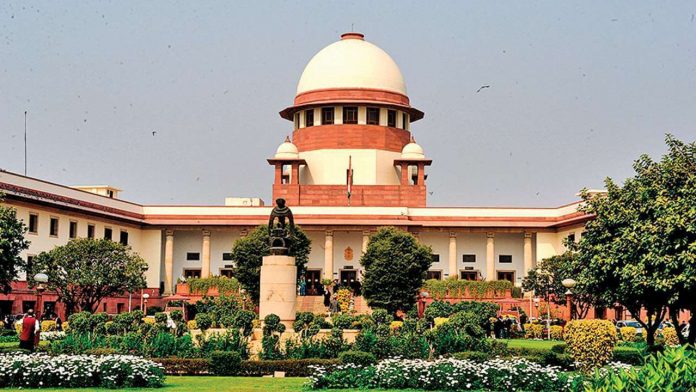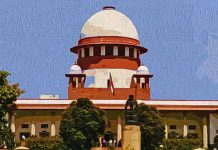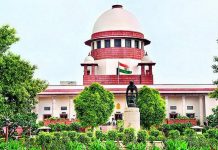This article is written by Daisy Jain, from the Institute of Law, Nirma University. This is an exhaustive article which deals with the court vacations – the prevalence of British tradition in modern India.
Table of Contents
Introduction
It has been seven decades since India attained independence and yet the policy of long vacations for the judiciary, which was incorporated by the British in India to permit their judges adequate time to travel back and forth between home and work, has managed to hold onto its existence. During British colonial rule in India, judges who were incapable of handling the heat of Indian summer would sail back to England and come back during the monsoon period, which resulted in the establishment of court holidays during this period.
Judiciaries now view the summer recess as both an enjoyable and essential break from their daily duties in their respective fields. Vacations are a lineage of colonial rule, and they’ve been in use in the modern world today. Because of the current state of affairs in the country, courts must refrain from taking such prolonged vacations in the future.
The tradition of court vacations – why did British judges take vacations
The British government instituted courts in India in 1860, and they are still in operation today. A total of seven judges were appointed to the Bombay High Court in 1862. The court’s jurisdiction entailed the Presidency of Bombay, which would include the city as well as the states of Gujarat, Karnataka, Andhra Pradesh, and Maharashtra. There were two types of jurisdictions in India : the original and the appellate courts. Cases originating in Mumbai were taken up by the original side, while those originating in the other four states were handled by the appellate side.
All of the judges were English nationals who had ties to the country through their families. They would travel there and back by ship, taking one month to travel there, one month to reside with them, and one month to return. As a result, they have three months of summer vacation, which is necessary because air transportation had begun after World War II. It only took one day to fly down and one day to fly back to the United States. However, we do not have any British judges at this time.
English-speaking judges took their holidays during Christmas, and as the number of Hindi-speaking judges continued to increase, they took their vacations during Diwali, which allowed them to devote more time to their families during the festival. The Diwali vacation lasts only five days, with the remainder of October serving as a vacation; similarly, Christmas vacation lasts only four days during the festival, with the remainder of December serving as a vacation. During their vacations, judges can unwind. A large percentage of judges are interested in their jobs and are waiting for the courts to open up. Many of them prefer to work all through their vacation time.
How do vacations affect the delivery of justice
This is the first time that this Public Interest Litigation (PIL) has been filed before the Supreme Court (SC) challenging that court vacations, a practice that dates back to the British era, be shortened to reduce the ever-increasing backlog of cases, which currently stands at a staggering 3.3 crore cases across the country. Currently, the Supreme Court has 193 working days per year, while the High Courts have 210 days and the Trial Courts have 245 days per year. However, one of the SC’s 13 courts, hears urgent cases throughout vacations.
According to the PIL, even the guidelines of the Supreme Court stipulated that a lower limit of 225 working days must elapse. When approximately 60,000 cases are pending in the Supreme Court, it has five vacation days in its calendar year. The Summer vacation is 45 days long, the winter vacation is 15 days long, and the Holi vacation is one week long. It is closed for five days each during the festivals of Dussehra and Diwali. The PIL also claims that these lengthy court vacations violate Article 21 of the Indian Constitution, which copes with the “Right to speedy justice”, which is guaranteed as a fundamental right to all citizens. In addition, the PIL stated that the Ministry of Law and Justice should include recommendations in its Law Commission Report regarding long court vacations, how it affects our judicial system, and what measures should be taken to alleviate the situation.
The backlog of over 3.1 crore cases in Indian courts, as well as the link between this backlog and insufficient judicial power (India has only 13 judges per million population, compared to the UK’s 100), is well documented. The idea that judicial appointments fall far short of filling current vacancies is quite well evident; as of May 1, there were 413 vacancies on the Supreme Court and in the High Courts, with eight High Courts having acting Chief Justices. As of February, there were nearly 6,000 vacancies across the country’s lower courts. Court vacations, which were common in colonial times, only served to exacerbate the situation and prolong the pending cases. The Supreme Court would be wise to carefully consider the petition filed by Ashwini Kumar Upadhyay, a lawyer as well as a political activist, seeking to shorten summer and winter vacations, when the courts close simultaneously; the vacation benches, which hear serious issues during the period, make little progress in reducing the backlog of cases.
In 2014, Chief Justice of India, RM Lodha, wrote to the Chief Justices of the country’s High Courts, asking for their thoughts on the possibility of courts operating on a year-round basis. Justice Lodha had proposed that the vacations which are provided at the same time to all the judges be abolished and that rather each judge should signify beforehand when she or he desired to take a vacation instead. The fact that the vacations which are allotted to all the judges at the same time continue to hinder the timely delivery of justice even after 4 years of Lodha’s suggestion should indicate the strong opposition to open courts around the year, from both the bar and the bench.
Improvements in judicial power are required—the 120th Report of the Law Commission stated that this should be increased to 50 per million people—but for the time being, increasing the number of days in a year and the number of hours in a day that courts are open is a priority.
After the release of the Supreme Court Rules of 2013, it was then decided that the duration of the vacation for judges has been reduced to 7 weeks from 10 weeks.
Judicial vacancies – another nail in the coffin
A report on the status of the judicial appointments in the High Courts has been introduced in the Parliament by the Standing Committee for the Ministry of Law and Justice. The report includes information on the appointments of judges in the high courts. It should be admired for the level of openness it has brought about in the system.
In the current year, high courts have an authorized strength of 1,080 judges but are currently operating with only 661 judges, leaving 419 positions vacant. This equates to approximately a 39 percent vacancy, which is a concerning figure given the high level of pending cases in the Indian courts. Even though the Department of Justice has been compiling monthly statistical data about the status of vacancies in each high court, this continues to be the case. As directed by the Standing Committee, the department is requesting that all parties involved, along with the high court collegiums, work together to speed up the appointment process.
Article 217 of the Indian Constitution deals with the appointment of judges in the high courts. In addition to the statutes of the Constitution, the procedure of appointments stated in the Memorandum of Procedure (MoP) is a time-consuming one. It is started by the Chief Justice of the relevant High Court, who then advises the nominees to the state government for consideration. In an optimal situation, this procedure would begin six months before the presence of the vacancy occurs. Several vacancies appear to have been vacant since 2015, according to the data published by the Standing Committee, and the department has not obtained a suggestion against filling the vacancy.
It is significant to mention that the Supreme Court has been keeping an eye on the number of vacancies in the district judiciary. In the case of Malik Mazhar Sultan v. Uttar Pradesh Public Service Commission (2019), the court had recommended time frames for the appointment of judges at the state level in 2006. The Supreme Court took suo-moto cognizance of the vacancies in the district judiciary in October 2018, and it ordered state governments and high courts to process status reports on the status of judicial vacancies and basic facilities in their respective jurisdictions. Since then, the Court has been closely observing the selections for district judges.
While this supervision may have been very good, by concentrating solely on judicial officers at the district level, it has failed to recognize the significant delay in filling vacancies on the high court bench.
The other problem with focusing disproportionately on vacancies is that it obscures more fundamental questions about how the authorized strength was calculated in the first place. It is presumed that a court with a full complement of judges will be effective in its operations.
However, we do not currently have a method of assessing the overall productivity of individual judges or the courts as a whole. Ad-hoc increases have been made to the judge strength in India, and there is little transparency regarding the factors that are taken into account for these critical calculations. We do not know whether it is updated regularly or who is in charge of the revisions at this time. A well-functioning legal system is dependent on the accuracy with which judge strength is calculated. A reasonable process relying on strong evidential standards such as the state’s litigation patterns, the volume of pending cases, and the current disposal rates of judges, among other things, should be invented and enacted by the judiciary for use at all levels of the system, including the Supreme Court.
Need for reforms in the current system
A significant contributor to the current high number of judicial vacancies across India’s various courts is that the obvious answer of increasing bench strength, which has mainly been centred on courts, has proven to be insufficient. The solution also does not consist solely in the establishment of parallel fast-track processes for specific types of cases. No matter how noble that goal may be, this method suggests that some forms of justice must take priority over others, which is a flawed assumption in an Indian context.
It is necessary to take a comprehensive and integrated approach putting more emphasis on finding a remedy rather than treating symptoms. To achieve accelerated access to justice in an efficient, cost-effective, technologically cordial, reachable, and fair manner, a strategy must be developed that focuses on not only reducing existing backlogs but also attempting to reduce the number of pending cases.
Rather than taking a one-pronged strategy of simply looking at appointments, it is necessary to attack judicial pendency on multiple fronts and at multiple levels. It necessitates communication and integration among the government, the judiciary, the bar, and members of the general public. As a stakeholder, everyone is also accountable for ensuring that the system functions properly. While the government has already begun a decriminalization effort with the dual goals of making it easier to do business and clearing the backlog of court cases, capacity building should proceed in tandem with a shift in the way people think about adherence.
Conclusion
What is required is an effective judiciary that is not only able to satisfy the needs and interests of individuals but also expresses this dedication to the public by adopting its methods to satisfy the demands of the country as a whole. We cannot allow a dysfunctional judiciary to exist in our society. We must do all in our power to improve its functioning, including interacting with citizens and demonstrating to them that the institution is concerned about their interests. It does not send the message of an institution that is engaged in changing itself for the benefit of its citizens when it takes a long break when no other working institution does the same thing. Rather, it demonstrates the fact that Instead, it demonstrates that the judges are not concerned about the citizens, but rather about themselves.
For the courts to continue to operate throughout the year, we must develop a method in which individual judges have adequate time off to avoid burnout. A potential option is to ensure that vacations are taken in a cycle so that the bulk of judges are available to serve at any one moment throughout the calendar year. This is also only achievable if all available positions are filled on a regular and timely basis.
References
- https://www.indiatoday.in/mail-today/story/pil-why-does-supreme-court-work-for-only-193-days-in-entire-year-1241141-2018-05-25
- https://indianexpress.com/article/opinion/columns/judicial-appointments-high-courts-ministry-of-law-and-justice-7240327/
LawSikho has created a telegram group for exchanging legal knowledge, referrals, and various opportunities. You can click on this link and join:
 Serato DJ Crack 2025Serato DJ PRO Crack
Serato DJ Crack 2025Serato DJ PRO Crack











 Allow notifications
Allow notifications



